SRAM’s Eagle Powertrain is the brand’s first ebike motor, and is made by Brose – a well-regarded manufacturer, known better for its power units on Specialized’s electric bikes.
In integrating the motor, drivetrain and controls into one wirelessly connected package, SRAM has added automatic shifting.
Made possible by its Transmission mountain bike groupsets, Auto Shift and Coast Shift are Powertrain’s biggest boasts.
Although Eagle Powertrain’s high-tech take isn’t perfect, 98 per cent of the time, Auto Shift and Coast Shift had a transformative effect on my riding.
SRAM’s shifting algorithm harmonised with my own expectations of when to change gears, leaving me to concentrate on riding harder and faster, which equates to more fun.
Combining this tech with impressive motor performance and an elegant cable- and clutter-free look makes Powertrain one of the best systems on offer.
If you’d like to learn more about SRAM’s Eagle Powertrain, check out our deep dive story here.
5 things you need to know about SRAM’s Eagle Powertrain
- The made-by-Brose motor has 90Nm of peak torque and 680W of peak power
- Two battery capacities are available: 630Wh and 720Wh units, plus a 250Wh range extender
- Auto Shift and Coast Shift change gears automatically as you ride, but changes can be overridden using the Pod controller’s buttons
- Eagle Powertrain is designed to be used with Eagle Transmission, tapping into its impressive on-power shifting
- Powertrain, Transmission and AXS Reverbs are all controlled by two Pod Controllers – there are no extra buttons
SRAM Eagle Powertrain ride impressions
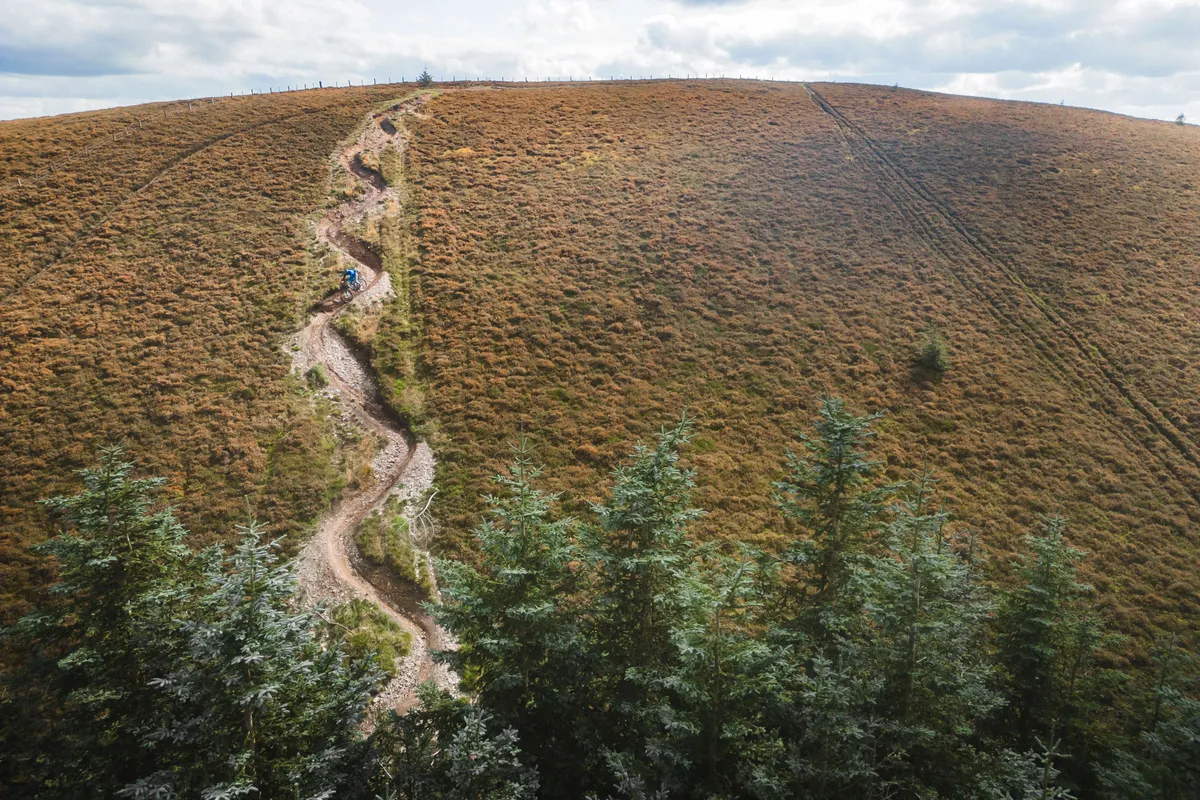
I rode SRAM’s new Eagle Powertrain on a Nukeproof electric enduro bike, fitted with the system’s biggest 720Wh battery, on my home trails in Scotland’s Tweed Valley.
These trails take in eye-wincingly steep climbs, undulating trail-centre loops and hardcore downhill runs.
These are the same trails I test most electric bike motor systems on.
Despite only riding it for three days, I got a good handle on the its performance.
SRAM Eagle Powertrain setup
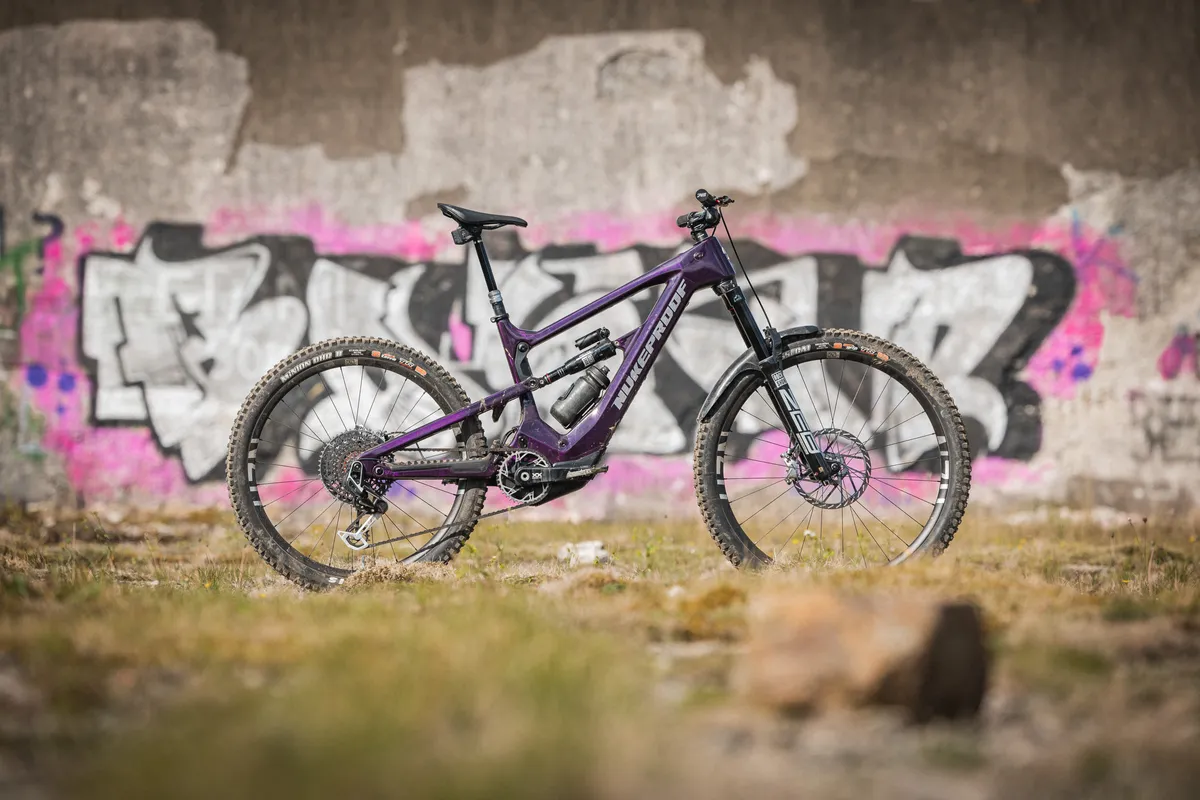
My test bike was delivered with all its components paired and set up, which is how they'll be sent to customers.
If you need to re-pair the bike's parts, the AXS Bridge Display acts as the master component, with the bike's other AXS components paired to it.
The only pairing order requirement is the right-hand Pod Controller must be paired first so it's assigned to the right-hand side.
SRAM Eagle Powertrain Auto Shift and Coast Shift performance

As the crown jewel in SRAM’s new Eagle Powertrain ebike system, Auto Shift and Coast Shift are worth talking about first.
It may sound like a back-handed compliment, but it's tricky to discern whether Powertrain's Auto Shift and Coast Shift are doing anything as you ride.
Shifts are discreet, functioning without a glitch, groan or grind – thanks to Transmission’s widely acclaimed performance – to keep your legs spinning within a relatively narrow cadence band.
Slow your pedalling down and the system shifts into an easier gear; speed up and, as expected, it selects a harder one.

Depending on how you’ve got your pedal cadence preference set (from -3, which biases lower cadences, to 3, which biases higher cadences), the system reacts accordingly.
Chugging along a flattish fire road, I varied between the mid and 1 settings. This meant my legs could spin comfortably, but also kept the gears reactive enough to select a higher ratio when I wanted to go faster, without delaying changing to a lower one when the gradient steepened.
On very steep climbs, I preferred the 2 and 3 settings.
This made the bike hold a lower gear for longer, like the sport mode in a car’s automatic gearbox. It tended to be most suited to extreme ascents.
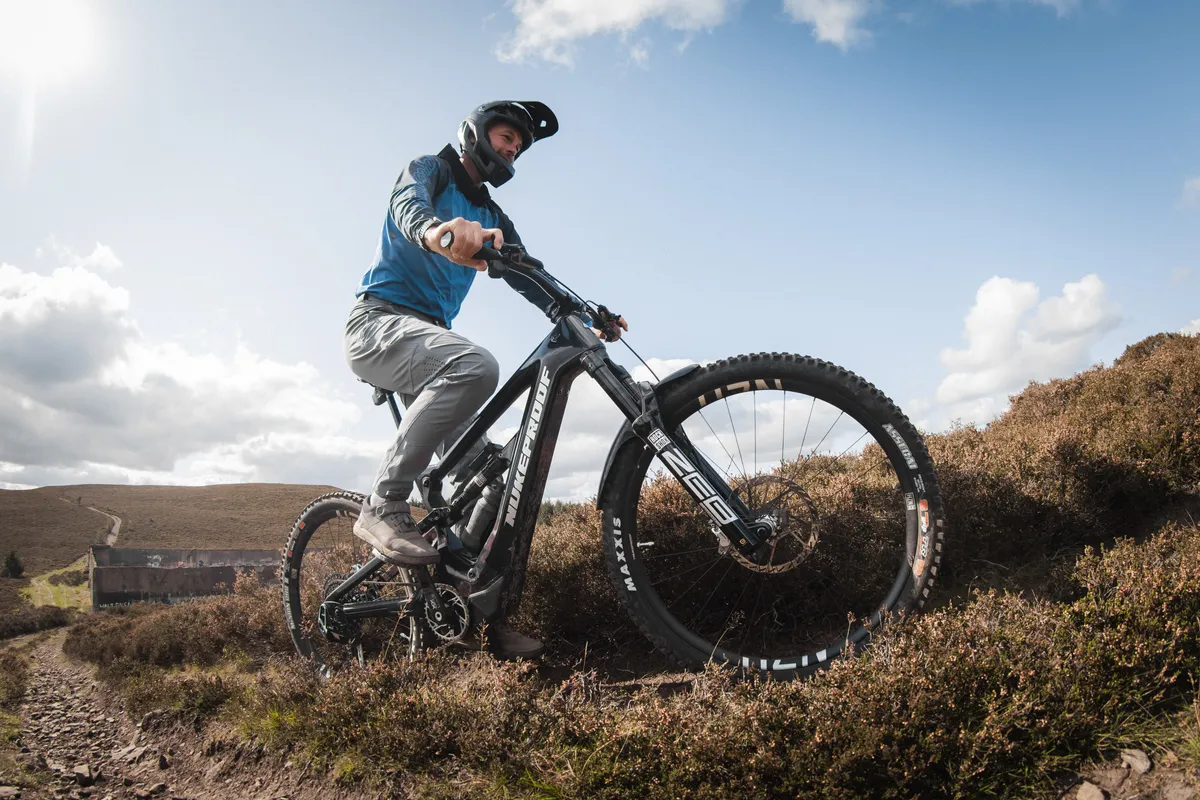
With plenty of adjustability, there’s loads of scope within Auto Shift’s modes to accommodate different riders' needs. Whether you prefer grinding or spinning, there are settings for either.
As a long-time user of manual gears, the temptation to interfere with Powertrain’s Auto Shift algorithm is strong, but it’s almost best left entirely alone.
Rider intervention is beneficial on sharp, short ramps, where you’d instinctively increase cadence but remain in a lower gear to pick up speed and momentum for the rise.
As your cadence increases, Auto Shift invariably selects the next hardest ratio, rather than holding onto your current one, even when set to 3.
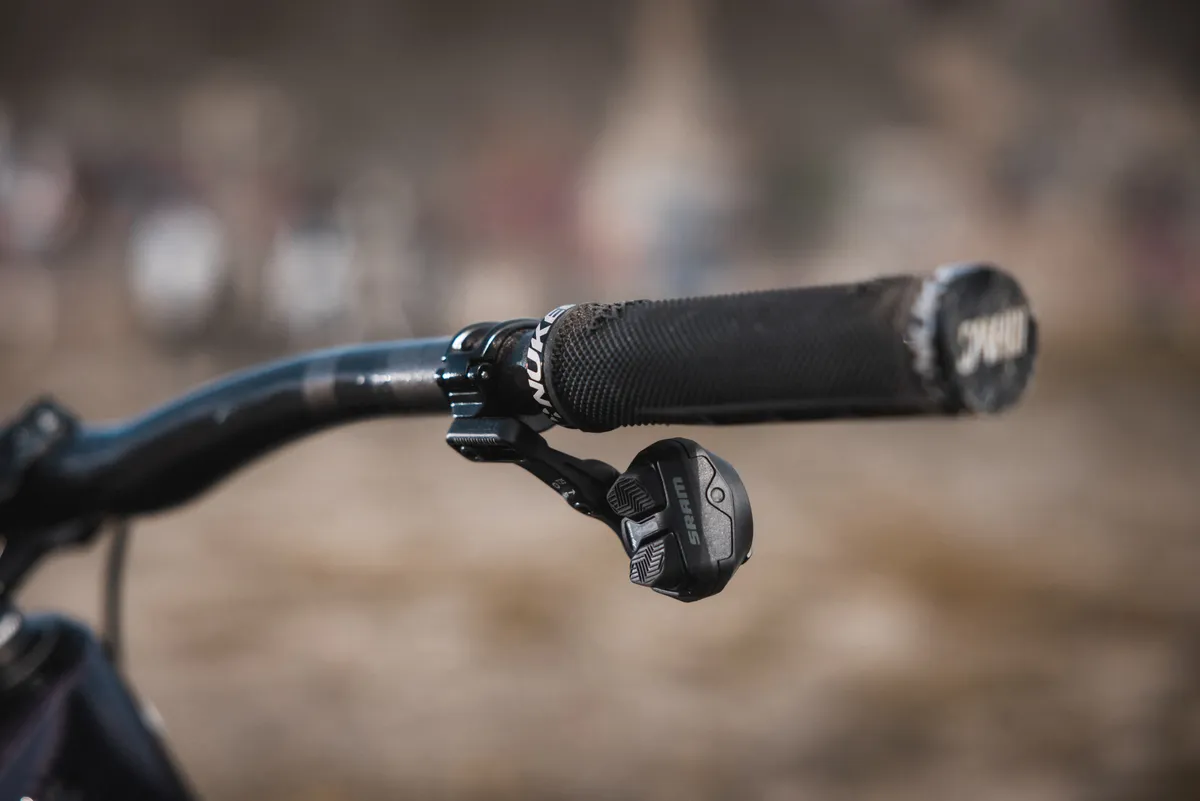
Pre-empting this shift by pushing the low gear Pod Controller selector button stops it from changing.
However, remembering to do so requires some cerebral re-jigging to master and doesn’t feel natural right away.
You soon learn the system, and by the end of my time on the bike I’d managed to clock when I needed to cancel shifts or let the system be.
Taking the laissez-faire attitude to Powertrain’s shifting relies on Transmission’s ability to change gears as drivetrain torques max out. While this approach is entirely viable, and doesn’t feel massively punitive, it isn’t necessarily the ‘right way’ to handle climbs.

In these instances, Powertrain is not entirely hands-off.
However, large swathes of trails and riding types shine a beautiful glowing light on Auto Shift’s fantastic performance, particularly conditions that aren’t at the extreme ends of the ascending bell curve.
Hammer around a trail centre’s undulating terrain and the system is faultless, taking care of business.
Gear shifts are well-timed and the derailleur moved at the exact moment I wanted it to.

Transmission’s design features – such as on-power shifting – shine when used with Powertrain.
While a little eerie at first, once I felt fully confident in its ability to change gear when I wanted, there was no holding back. I was left to enjoy the brown ribbon of flowing dirt ahead without distraction.
Joining the dots between bouts of Auto-Shift assisted pedalling is Coast Shift.

This fills in the freewheel blanks with imperceptible gear shifts when your speed changes, setting the bike’s ratio for you. It removes jerky stop-start punctuation from variable-speed trails, opening up more flow.
The only sign Coast Shift is working is a quietening of the freehub’s whirr when the drivetrain cycles so the derailleur can select the next cog.
On undulating, less extreme trail-centre terrain, it’s massively impressive, reacting seamlessly to the track’s flowing contours.
It busies away, shifting gears beneath you, making sure your bike is in the correct one for your speed.
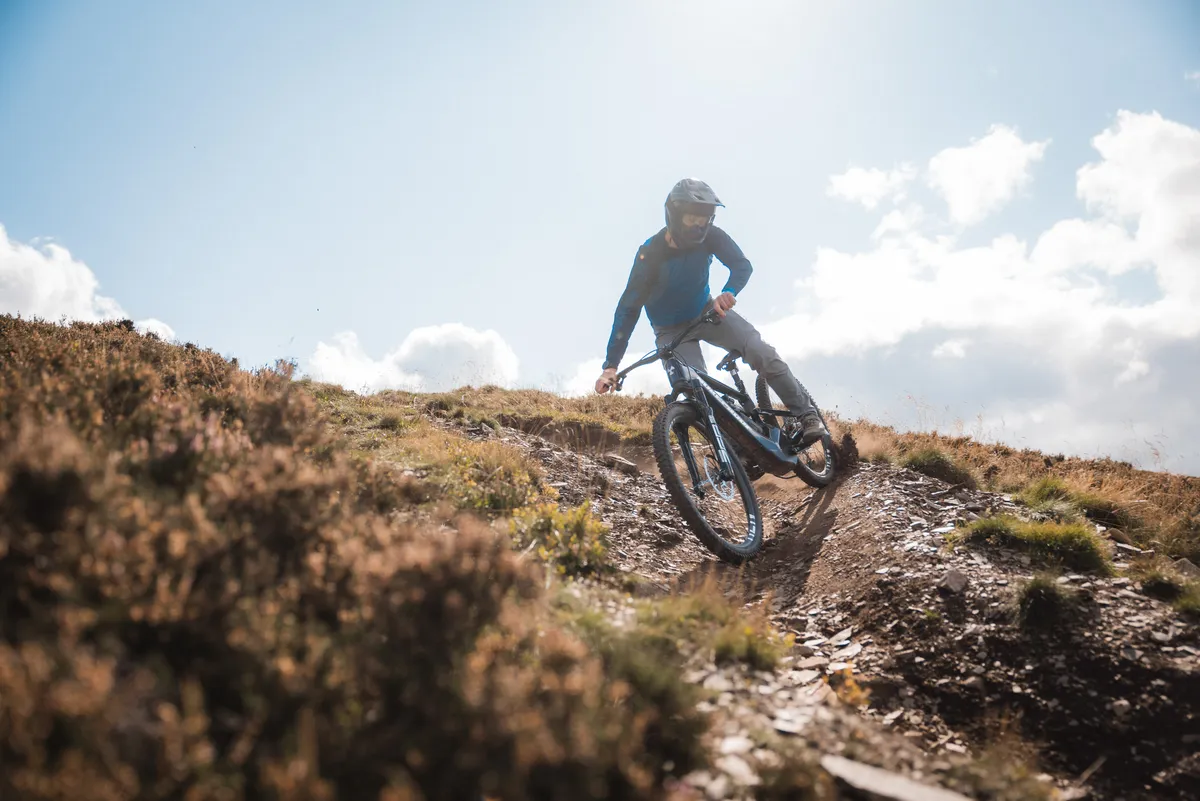
Slow gradually without pedalling, and it shifts across the cassette into the easier gears. With gravity on your side and your speed increasing, it does the opposite, seamlessly.
Once again, it’s best left to its own devices for the most part.
But there are some scenarios where it gets it wrong.
Freewheel at high speed down a hill towards a steep, sharp ascent and Coast Shift’s gear changes can’t keep up with the rapid deceleration.

It struggles to select the lower gears quickly enough to match your eventual cadence. This causes you to grind at low RPM until Auto Shift catches the derailleur up with your speed and rhythm.
While the most extreme types of this scenario are fairly limited, they exist.
I'm hopeful software updates down the line should help speed up reaction times, reducing or even totally negating this type of problem.
You can stop Powertrain from banging through the gears by selecting the ratio you want ahead of Coast Shift doing its job, just as you would without automatic shifting.
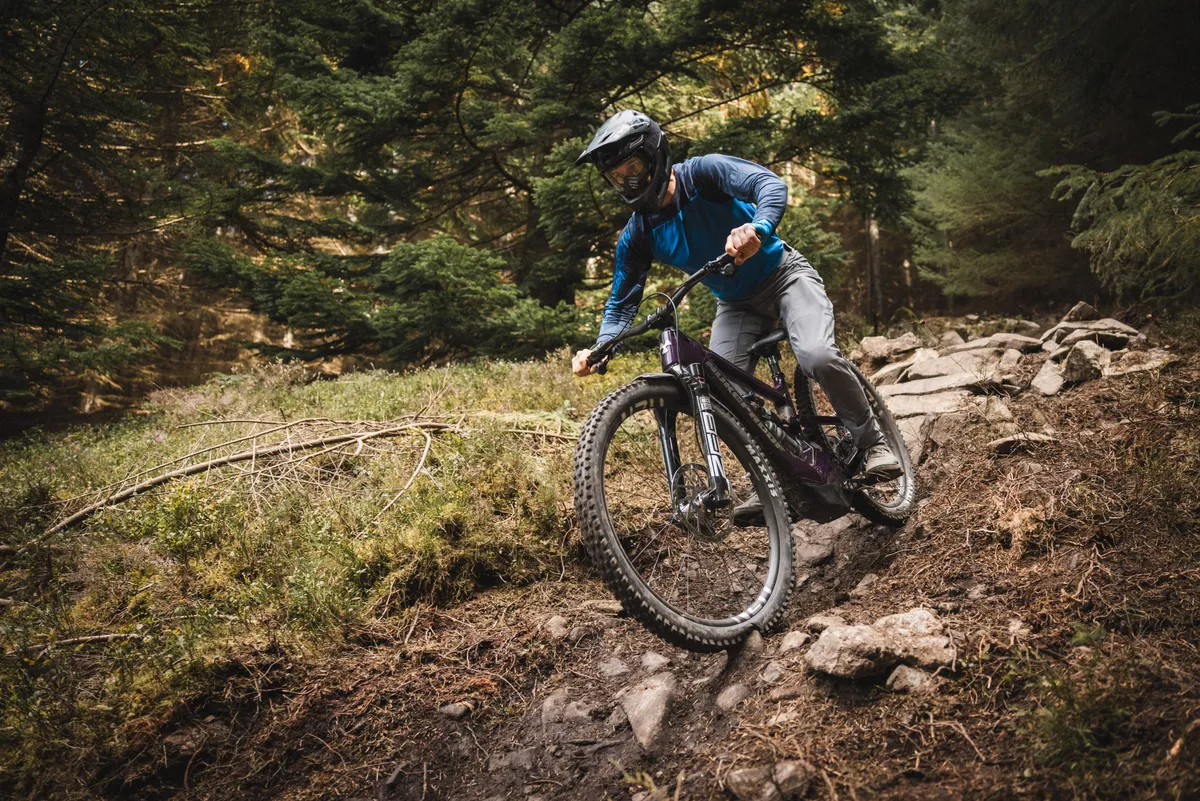
Being charitable to SRAM, how often do you see people who are entirely in control of their bike’s gear selection, in the wrong ratio at the foot of a climb after a descent?
More pertinent yet, how often are you in the wrong gear at the bottom of a climb after a quick descent? Don’t be ashamed, it happens to the best of us, myself included.
Only proper forethought and planning can prevent it, but therein lies the biggest issue of Powertrain.
It is reactive rather than proactive, and can only respond to its sensory inputs. But that information is just a snapshot of what’s happening, rather than what is about to happen.
For a truly proactive shifting experience, the bike needs to know what the trail ahead looks like, something it can’t currently do.
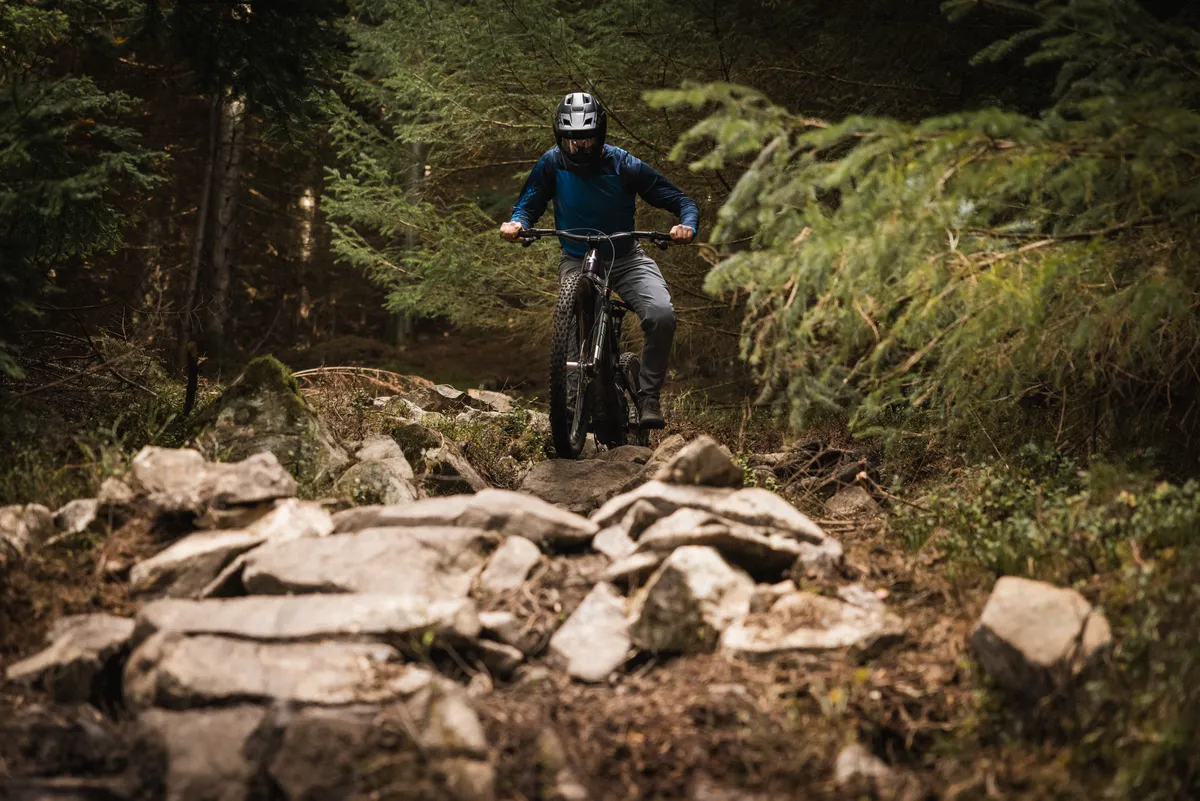
Maybe future iterations will integrate bar-mounted lidar sensors and GPS to get a true picture of what’s down the trail ahead.
Or they could work by uploading a .gpx file of your route to the bike’s onboard computer, which uses trail data to shift gears preemptively.
But until that day, if you’re dead set on automatic gear shifting – and after riding this system, I think you should at least be very curious – Powertrain does a brilliant job of upping the ante compared to archaic manual shifting.
SRAM Eagle Powertrain on-trail feel
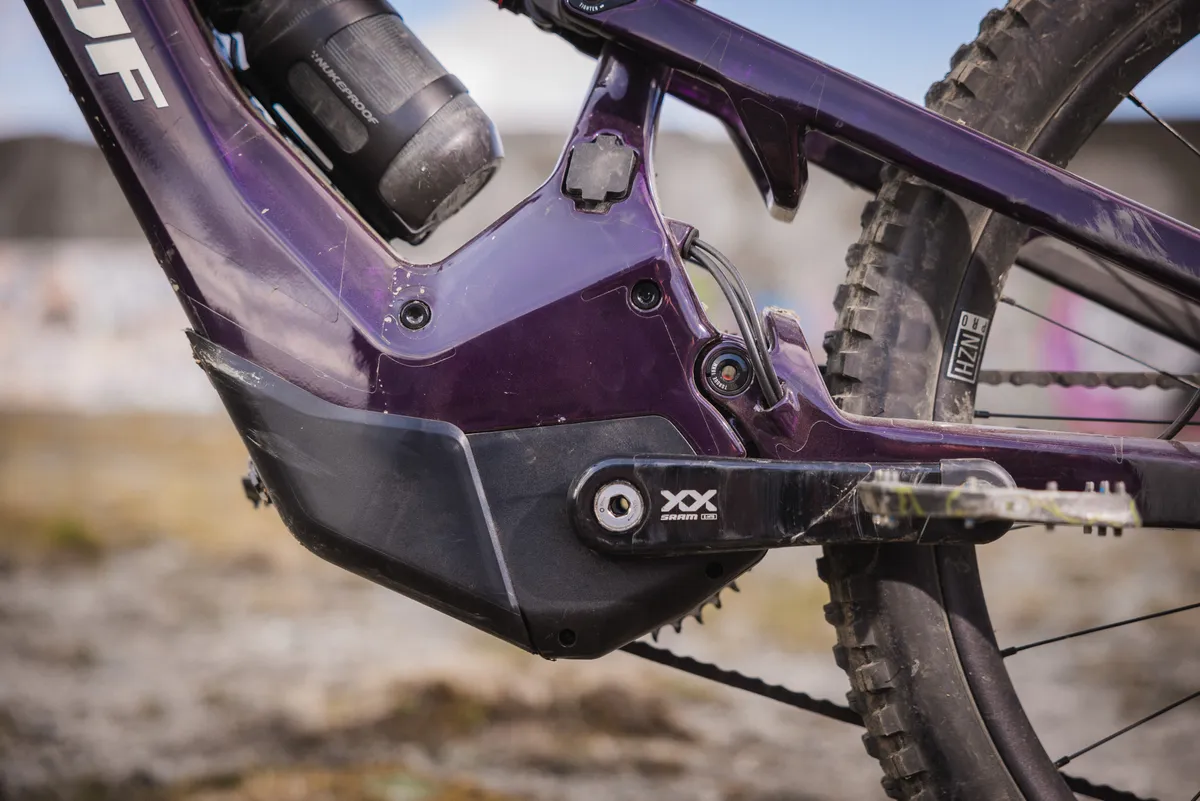
Those who have ridden Specialized’s latest Turbo Levo will find the motor feel and sound familiar when jumping on a Powertrain-equipped bike.
Although Powertrain has one fewer assistance mode than Specialized bikes, and doesn’t feature MicroTune, both motors are made by Brose and technologically very similar.
Delivering its assistance smoothly, Powertrain’s output feels analogue.
Wheelspin is easy to manage when starting on seriously steep gradients; push gently through the pedals and the motor’s assistance builds, ramping up to the 90Nm thump rather than throwing it all into the back wheel in one hit.

This non-binary nature helps keep front-wheel lift at bay. Small changes in pedal pressure give subtle but defined adjustments to the bike’s forward drive without assistance dropping off a cliff to zero, or coming on too strong.
But overrun – compared to Bosch’s continued assistance – feels quite short in its stock setting.
Re-timing your pedal strokes to avoid hitting an obstacle needs more planning, because a pause in rider power also pauses assistance.
SRAM says adjusting overrun isn't currently possible in the AXS smartphone app.

There’s plenty of muscle on tap, especially in Rally mode. The punchy, consistent torque and power give enough shove to either grind or spin up technical ascents, depending on rider preference.
Like most motors, however, its cadence sweet spot extracts the highest-quality assistance. Venture too far either side of that window and it can bog down at very low cadences or run out of puff if your legs are spinning like a whirlwind.
Auto Shift provides a solution for this, working to keep your legs turning within the motor’s preferred range.
In its stock settings, Range mode feels akin to Shimano’s Trail, Specialized’s Trail and Bosch’s Tour . Rally is punchier than Shimano’s Boost, almost identical in feel to Specialized’s Turbo, but slightly down on power compared to Bosch’s eMTB, Turbo or Race modes.
However, unlike Shimano’s Trail and Bosch’s Tour and eMTB modes, none of Powertrain’s assistance levels are reactive or ‘smart’.
Their outputs are constant, and don’t increase or decrease according to pedalling input.
Bosch’s Tour and eMTB modes still lead the ebike charge with impressive power and a rewarding rider feel.
Ignoring Auto Shift, Coast Shift and Powertrain’s wireless ancillaries for one minute, in terms of power and assistance mapping, the Bosch Performance Line CX motor is still the one to beat.
But Powertrain’s interconnectivity certainly gives it the edge over Bosch overall.
Silence is a virtue

When descending, the whole system is deftly quiet.
Transmission keeps chain slap at bay, while the Brose drive unit has zero freewheel clack or rattle; an issue that plagues other manufacturers.
The Nukeproof I tested was the quietest bike I’ve ridden to date, motor-assisted or not.
On the ups, it emits a more consistent whirring noise than Shimano EP8’s fluctuating gobble sound, similar to Bosch’s Performance Line CX, but lower in tone.
The motor’s not stealthy silent under load, but it’s certainly less intrusive than other offerings on the market.
SRAM Eagle Powertrain battery life

Fitted with Maxxis tyres (MaxxGrip Assegai front, MaxxTerra Minion DHR II rear) and switching between Range and Rally, I managed 1,800m of ascent on a single charge, with 15 per cent battery left.
This is similar to Bosch-equipped bikes and, unsurprisingly, Specialized’s Turbo Levo.
During the test period, I was joined by fellow bike tester Danny Milner of MBR, who was riding a Propain, fitted with SRAM’s 630Wh battery. Danny’s bike ran out of juice after roughly 1,550m of ascent.
Toning the assistance levels down in the AXS app would increase battery life further, but given Range’s punchy power, I have no complaints about Powertrain’s run time.
SRAM Eagle Powertain user interface, functionality and operation
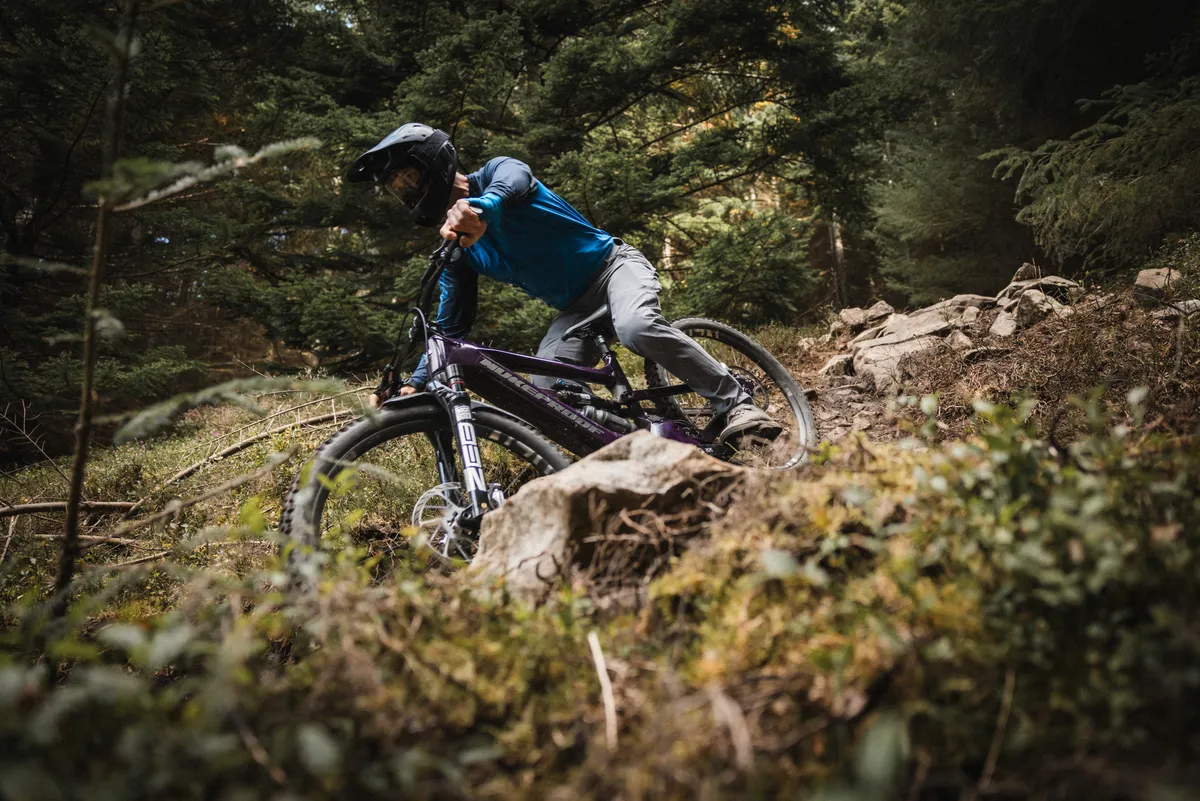
The AXS Bridge Display’s screen only shows the bare basic information required: mode, battery life and Auto Shift setting.
While not screaming out for more data – and you can connect a GPS head unit if you want speed, range and other parameters – having the option to tech-up the system from its pared-back standard configuration would be good.

The AXS Pod controllers are familiar in feel and ergonomically sound. The lack of wires is appealing – an electric mountain bike with only brake hoses looks revolutionary compared to current offerings from other brands.
Long and short pushes of the buttons are also intuitive in both feel and the functions they control.
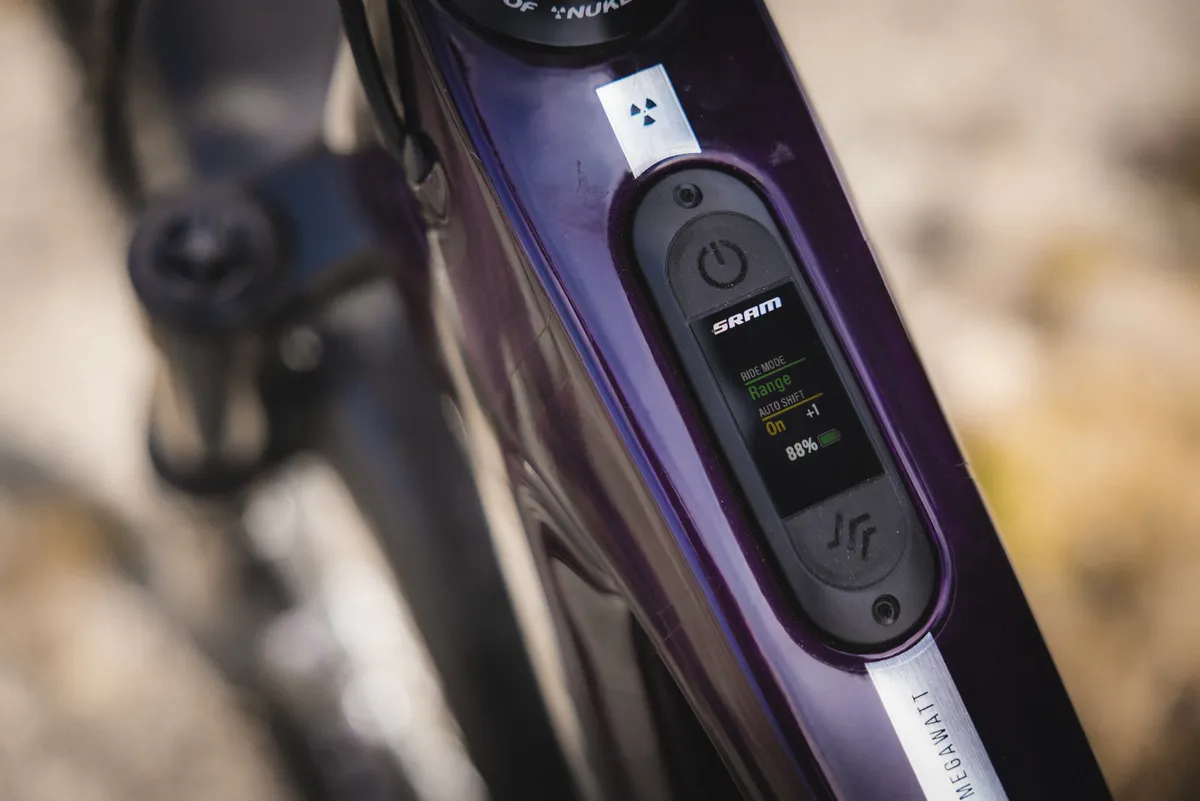
The left-hand top Pod Controller button must be used for walk mode, but all the other buttons can be reassigned according to your tastes.
However during the test period, I couldn’t reassign the left-hand Pod Controller’s upper and lower buttons between motor mode selector and AXS Reverb actuator.
SRAM Eagle Powertrain bottom line
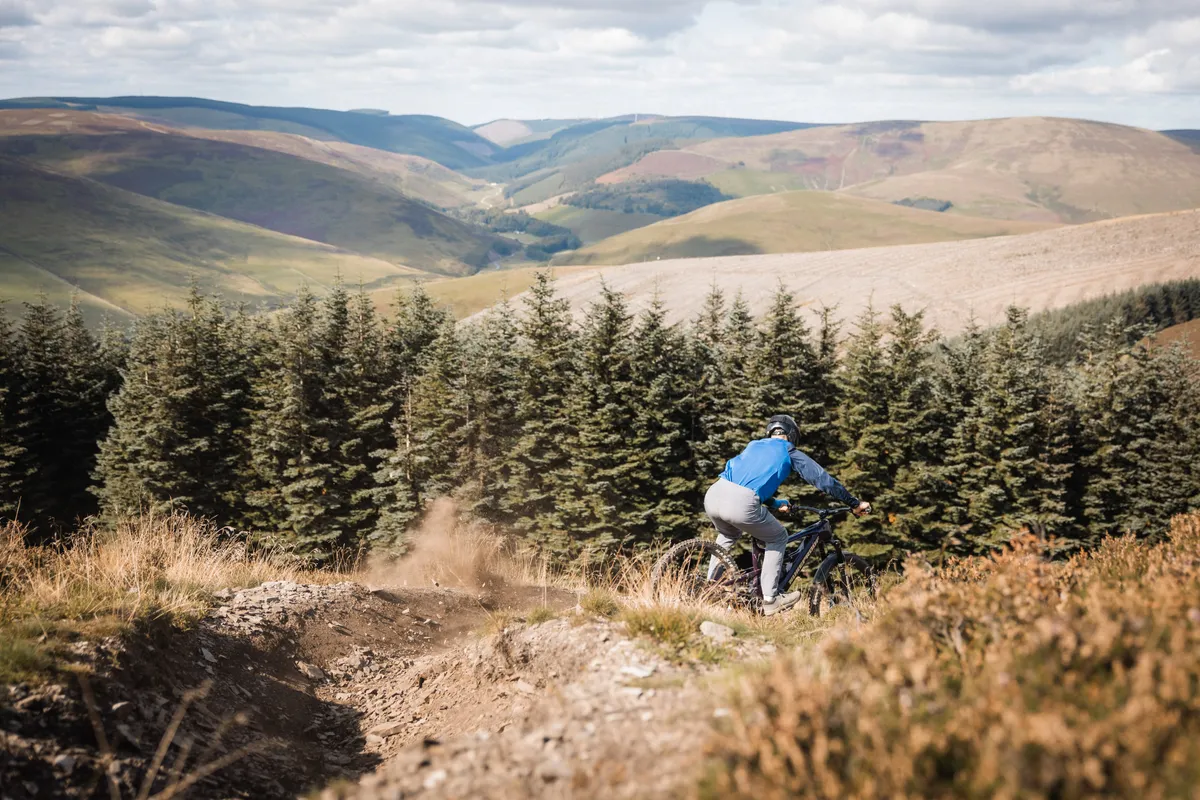
By taking care of gear shifts, Powertrain leaves you with one fewer thing to think about.
Arguably, changing gear is second nature for most, and whether freeing up that mental bandwidth reserved for shifting has tangible speed, fun or technical benefits will come down to your own priorities.
Personally, I enjoyed relinquishing control to the machine.
Not thinking about gear changes was novel and exciting, and encouraged me to ride more aggressively with a fun and fast-paced style, especially on trail-centre – rather than winch-and-plummet – rides.
The most scrutinous will find fault in Powertrain’s inability to read the trail ahead and predict which gear it should be in, and feel frustrated in the few scenarios when they’d have selected a different gear from SRAM’s algorithm.
Without linking it to your brain directly, or scanning the trail ahead with additional, costly sensors, technology to predict how a human and bicycle are going to interact with terrain they’ve not yet ridden just doesn’t exist.
But within those confines, Powertrain is another leap towards a perfectly biased symbiosis between bike and rider, where the onus is on the bike to do the mundane and the rider to do the extraordinary.
As the icing on the cake, and the cherry on top, all this new tech is intertwined with a powerful, robust motor and Transmission’s incredible shifting.
SRAM’s Powertrain ecosystem is potentially the best and slickest non-gearbox full-house ebike system currently out there.
Product
| Brand | sram |
| Weight | 2900.0000, GRAM () - Claimed |
| br_whatWeTested | SRAM Eagle Powertrain |
Features
| br_connectivity | bluetooth |
| Features | Auto Shift, Coast Shift |
| br_bottomBracketType | ISIS |
